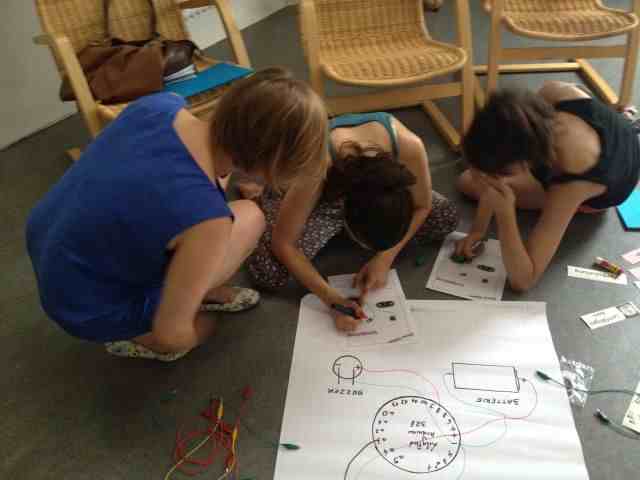MediaArt@Edu – mentoring media and art education processes in vocational preparation
It has been silent here for a while, which has to do with the ongoing research and teaching activities related to new projects such as the research project „MediaArt@Edu“ (ACRONYM), which looks at artistic approaches to support media literacy of young people in vocational preparation and vocational orientation programs.
It aims to develop new concepts to enhance digital media skills of young people. The project is co-ordinated by the Karlsruhe Institute of Technology’s Institute of Vocational and General Education and realised in collaboration with the Center for Art and Media ZKM’s department of Museum Communication, the German Federal Agency of Employment Karlsruhe as well as the Hardtstiftung e.V. Karlsruhe, a youth welfare service for young women.
The project is funded for 3 years under the German research programme entitled „strengthening media skills for sustainable media education in vocational qualification” of the German Federal Ministry of Education and Research (BMBF).
It aims to scrutinize artistic approaches and new mentoring and portfolio concepts to be applied in media technology education with young participants of vocational preparation and vocational orientation programs. In vocational preparation measures outside of vocational schools, young people are prepared for work or to take up a formal vocational training place. They are placed in a transit situation, hoping to get employed in the future.
However, in the project, a new concept to support digital media literacy of young people is developed, tested and evaluated. It brings together concepts of art, technology and vocational education as well as a specific mentoring model including portfolio research books to improve processes of self-reflexion of the learners.
In the project students of pedagogy, vocational education, engineering pedagogy as well as art and technology education accompany the young participants of vocational preparation programs. We intend to realize an education-through-art approach to technology by means of introducing artistic processes with digital media as well as didactic concepts of art education to vocational preparation. By improving media literacy of the young participants, the project aims to motivate them imagining and shaping pathways towards their own vocational biography and a perspective of future employment.
For further information, the (German) Web site can be accessed at http://www.ibp.kit.edu/berufspaedagogik/media-art-edu.php
English information will be available soon as well.


